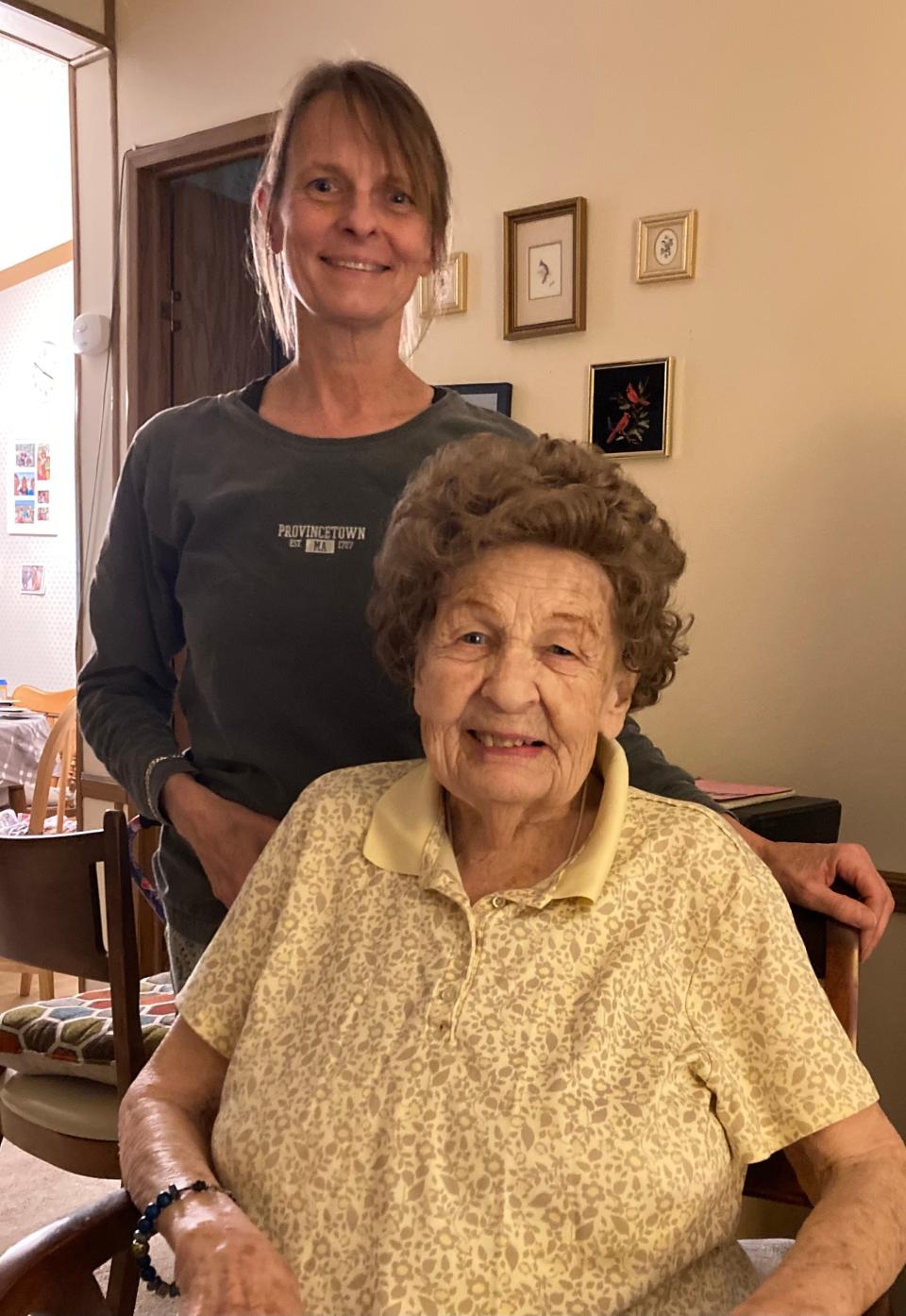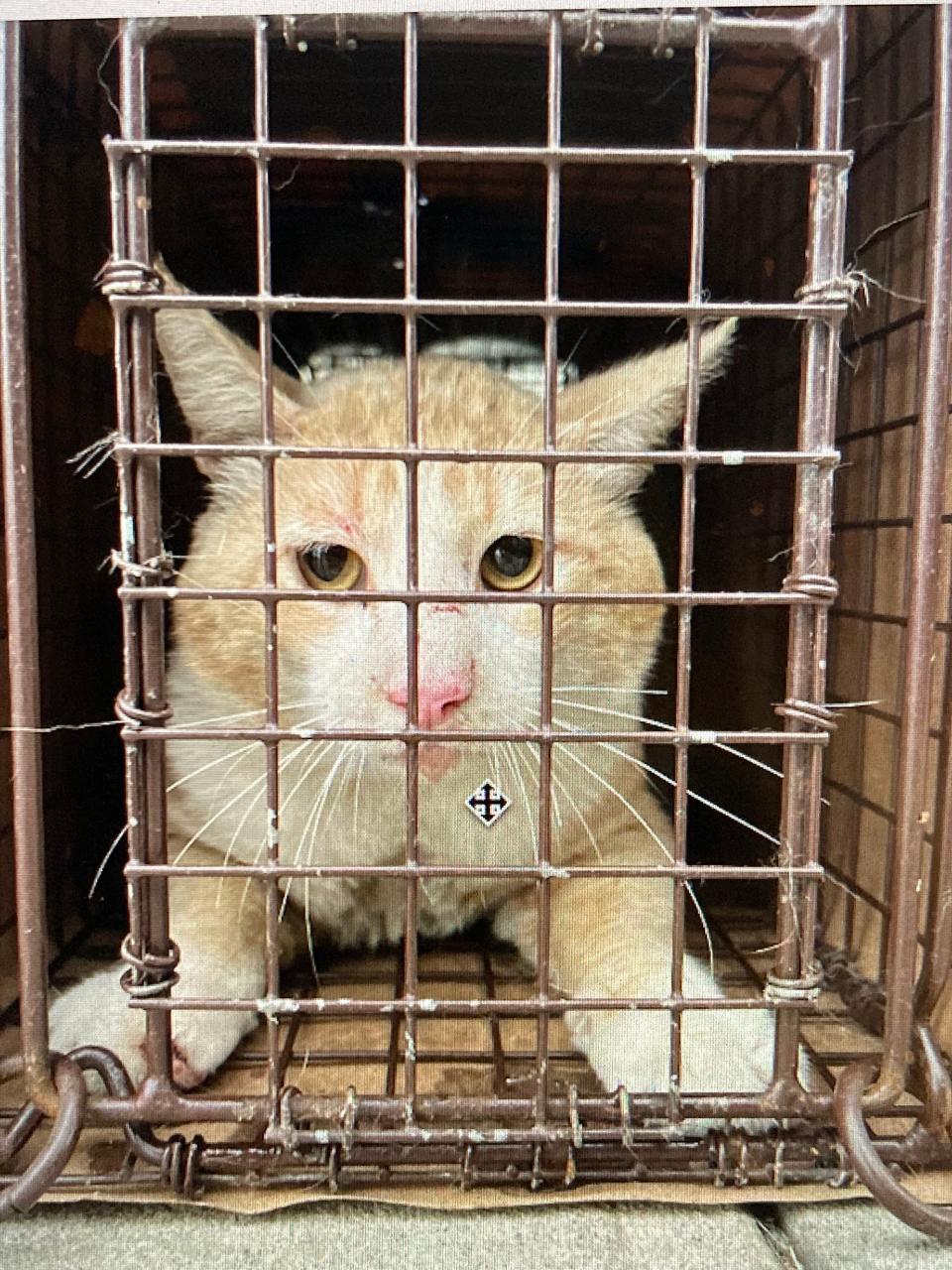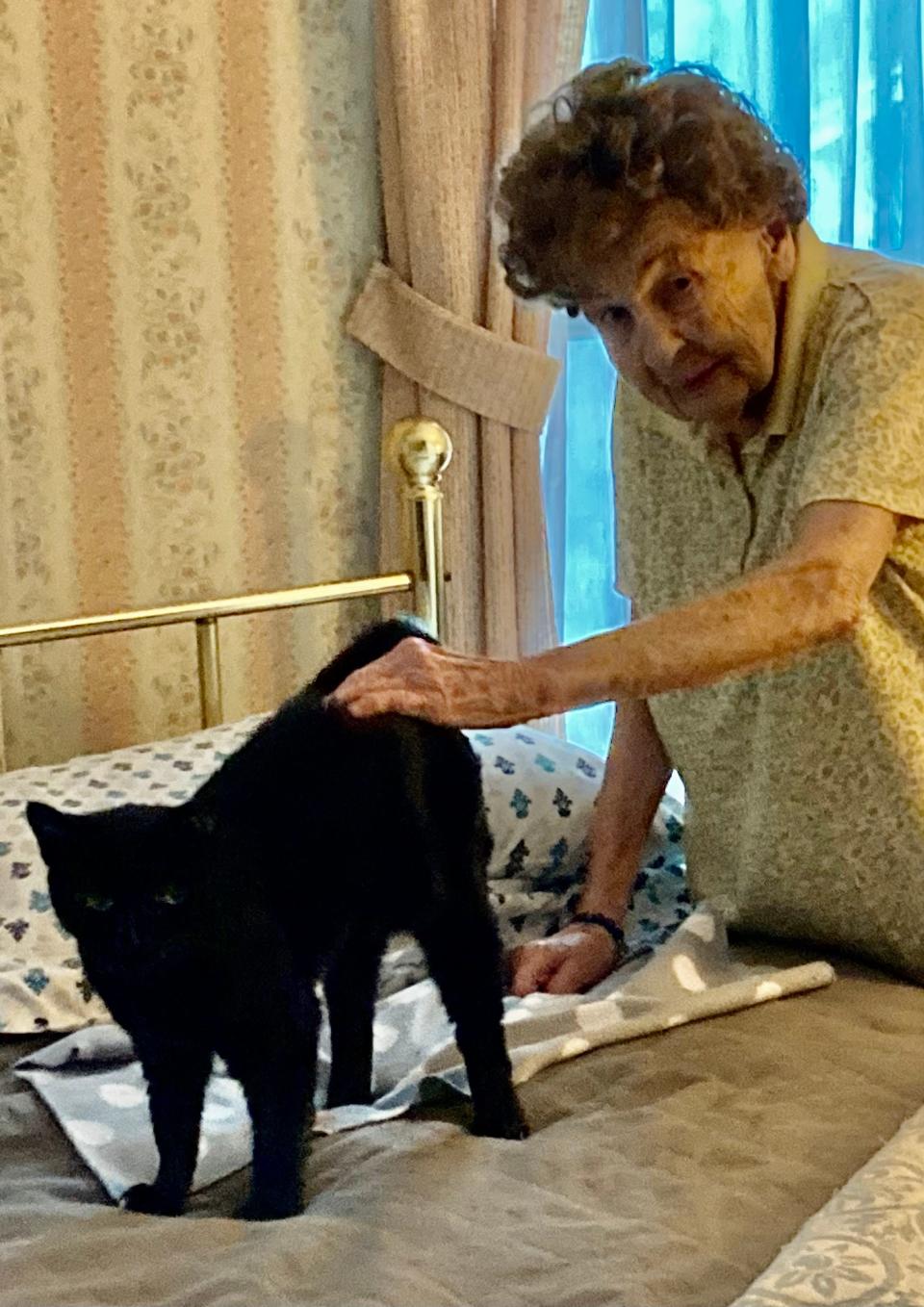Local view: Controlling feral cat population – a labor of love for Gardner woman
"Catch and release" is the method done by many of the people who fish on the lake where Gerry and I live. They catch the fish for the fun and skill of the sport but don't take them home to cook for supper; rather they release them so they can continue their free lives in the water and increase the fish population.
The fishermen's method of catching and then returning the fish to their habitat reminded me of a new term I learned from Elaine Rodecki pertaining to her dedication to feral cats – TNR – trap, neuter, and return. However, she doesn't do it for sport, she does it to prevent suffering in the cats' lives. Unlike the fisherman who want more fish, she traps cats to have them neutered to halt overpopulation, which can make it difficult for them to find enough food and places of shelter in the winter. Elaine is a feral cat rescuer, and, as in fishing, it requires skill.
Elaine, who lives in Heritage Village in Gardner, first learned how to trap cats in 1990 when she volunteered at a cat shelter in Lunenburg and watched the director trap cats that were too wild for owners to catch by hand. It made her think about how she could help the many homeless cats in Gardner.

In 2000, Elaine decided to buy a trap and rescue feral cats.
"If it's feral, you want to prevent overpopulation," she said. "It hurts me to think about all the little kittens that die in their first year of life."
She loves animals and knew many cats suffered and died of starvation or froze to death in the winter.
Neutering feral cats with supports from local veterinarians
Elaine found local veterinarians who supported her mission and agreed to neuter or spay for free or for a minimal price. Veterinarians who knew about her work referred folks to her for trapping when they received calls from a person reporting a feral cat taking up residence around their home. Many would feel sorry for the stray animal and put out food for it, and often they were willing to have it returned to their yard, but they didn't want the number of cats to multiply; sometimes these people would help if there was a neutering cost. When people didn't want the cat returned, Elaine searched for a farm that was willing to have it in their barn to catch mice.
The organization called Spay USA contributed toward the neutering costs. Also, she found two locations that did neutering for free – the SPCA Farm in Methuen did it one Sunday a month and Tufts Veterinary School in Grafton offered the service as part of their teaching program; the neutering gave students opportunities to learn the procedure under the supervision of their instructors.
Many cats take up residence behind restaurants and stores where they can find food. Some restaurants leave their dumpsters open so the cats can get leftover food, and in return, "Cats provide free rat control for them," Elaine said. Feral cats can survive well if the population is controlled.
She sets traps supplied with cat food to entice them to enter, and then goes back the next day to bring the captive to be "fixed." The vet clips the left ear to show the cat has been neutered just in case the same cat gets trapped again. But, cats are smart.
"Once trapped they'll not enter the trap again," Elaine said.

After the cat was neutered, Elaine would bring it to her home overnight until the anesthesia wore off, and then return it to its residence the next day, where it is used to living and finding a food source.
"After neutering, they can live a regular life and not have the burden of having babies."
Rescuing adventures
A job such as hers would, of course, offer some adventures. Sometimes she would find two in her trap, and one time a skunk made its way in with a kitten. Elaine deliberated for awhile trying to decide how to handle the situation. Fortunately, to her relief, when she cautiously opened the trap, the skunk calmly walked out and didn't even lift its tail, while the scared kitten remained curled up in a corner. (When she caught kittens, she would bring them to a shelter to be adopted. Feral cats are not desirable for adoption but little kittens adapt well.)
Another adventure she had wasn't so fortunate. One cat got its paw caught in the cage wire and while Elaine was trying to figure out how to get the paw out, the cat bit her finger and caused a bone infection. Elaine had to have intravenous antibiotics administered three times a day for six weeks.
Another cat that she trapped had a sore paw. It seemed that an animal had bitten its toe and it was too painful for her to walk on. So, after it was neutered, Elaine brought her home in the cage, planning to keep her till the paw healed. It took about a month and by that time, the cat was used to being cared for and might have had trouble going back to homeless living. Elaine decided it would be best if she kept her. She named her Emily. Elaine can pat Emily but even after 14 years, she still doesn't sit in Elaine's lap or allow her to pick her up.

"Adult feral cats are very hard to tame, often never," she said.
Elaine had to give up her rescue work in 2012. She was 81 and needed to have back surgery.
"My work with cats was one of the most worthwhile things I've done in my life," she said
She trapped and took 414 cats to places where they could be neutered. Just think what the feral cat population in Gardner would have been if she hadn't taken on that responsibility.
It was heartwarming to hear Phillipston's Animal Control Officer Glen Whitney tell about his "no-kill" policy with the stray or problem animals he answers calls for.
More: Local view: Phillipston man heals from loss of son while living their shared dream
So, contact your local animal control officer if a stray cat appears at your home … be a cat rescuer.
Carole Gariepy is a Phillipston resident and author of “Dragging Gerry around the World” and “Why Go There?”
This article originally appeared on Gardner News: Gardner woman helps control feral cat population by neutering, spaying

